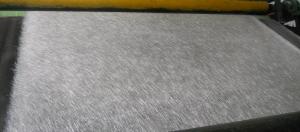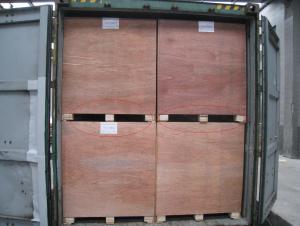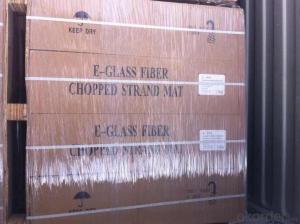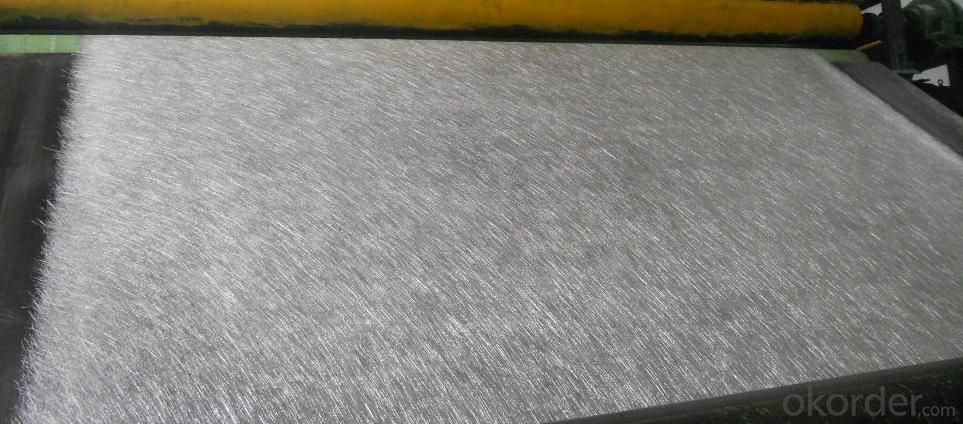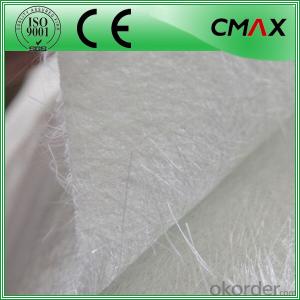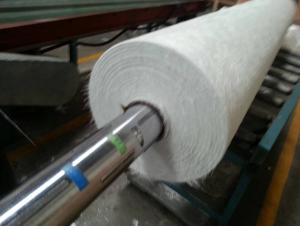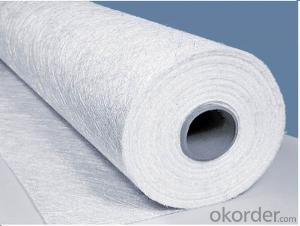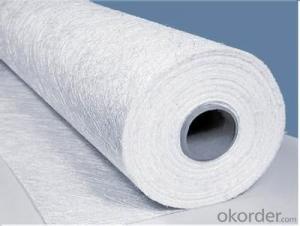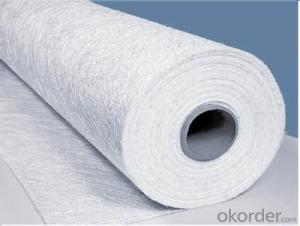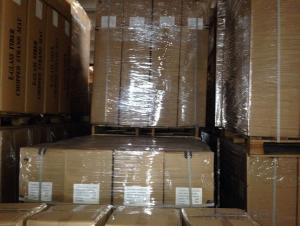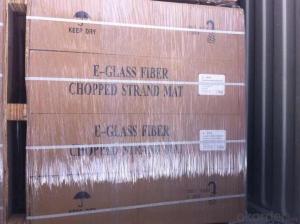Fiberglass Mat Tissue - Powder Binder E Glass Chopped Strand Mat for Fixed Table Lamination
- Loading Port:
- China Main Port
- Payment Terms:
- TT or LC
- Min Order Qty:
- 1000 kg
- Supply Capability:
- 500000 kg/month
OKorder Service Pledge
OKorder Financial Service
You Might Also Like
Product description of Powder Binder E glass Chopped Strand Mat for Fixed Table Lamination
Powder Binder E glass Chopped Strand Mat for Fixed Table Lamination is an unwoven fabrics consisting of randomly distributed chopped strands held together with powder binder.
Powder Chopped Strand Mats are compatible with unsaturated polyester, vinyl ester, phenol and epoxy resins.
This product is special designed and produced for the FRP sheet/panel fixed table lamination. The typical end-use applications include various Gel-coat panels and sheet, the end application is for the cold warehouse, cold trucks body etc.
Specification of Powder Binder E glass Chopped Strand Mat for Fixed Table Lamination
Property | Glass type | Weight(g/m2) | Width 200~3300 | Roll Weight | Moisture Content /% | Combustible Content /% | Breakage Strength /N |
Test Method | GB/T 1549 | ISO3374:2000 | ISO3374 | GB/T17470-1998 | ISO3344:1997 | ISO1887:1995 | ISO3342 |
EMC 250 | E-GLASS | 225±22 | ±5 | 6~150 | <0.2 | 5.0±0.6 | ≥150 |
EMC 300 | E-GLASS | 300±30 | ±5 | 6~180 | <0.2 | 4.0±0.6 | ≥190 |
EMC 375 | E-GLASS | 375±37 | ±5 | 6~180 | <0.2 | 4.0±0.6 | ≥200 |
EMC 450 | E-GLASS | 450±45 | ±5 | 6~180 | <0.2 | 3.8±0.6 | ≥200 |
Characteristics of Powder Binder E glass Chopped Strand Mat for Fixed Table Lamination
1.Uniform density ensures consisttent fiberglass content and mechanical properties of the composites products;
2.Uniform powder distribution ensures good mat integrity, little loose fibers and small roll diameter;
3.Fast and consistent wet-out speed in resins and rapid air lease reduce resin consumption and production cost, and enhances productivity and mechanical properties of the end products.
4, The composite products have high dry and wet tensile strength and good transparency.
5, High strength with stiff mat for panel laminating.
Package:
1, the Mat roll will be wrapped in PVC/PE film, and then packed in wooden boxes, fasten by steel strip outside of the wooden boxes;
2, Horizontally placed in wooden boxes:
3 rolls*3rolls
There are isolated beams between the roll layers to protect the mat from damage.
FAQ:
1. Why Choose us?
CNBM is a stated owned company, provide the guarantee for the best quality, best service and safety business.
2. How will we guarantee the quality?
a, ISO 9001-2008 quality control system;
b, Strict and regular quality control in production;
c, Inspeciation when loading into container before shippment;
d, Sample stock for one year for quality tracing and record.
3. What is your MOQ?
Our MOQ is one pallet.
4. Can you provide sample?
Yes, samples are in stock. we can offer free sample for you.
5. Payment terms?
We can accept L/C, T/T etc.
6. Do you offer OEM service?
Yes, we can print customers’ logo on the packaging;
And the size and specification can be produced and design according to your demand.
7. What is the Production Lead Time?
1 *40HQ each day.
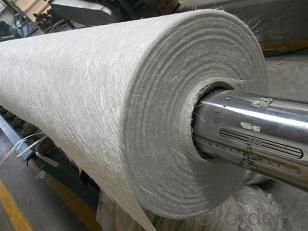
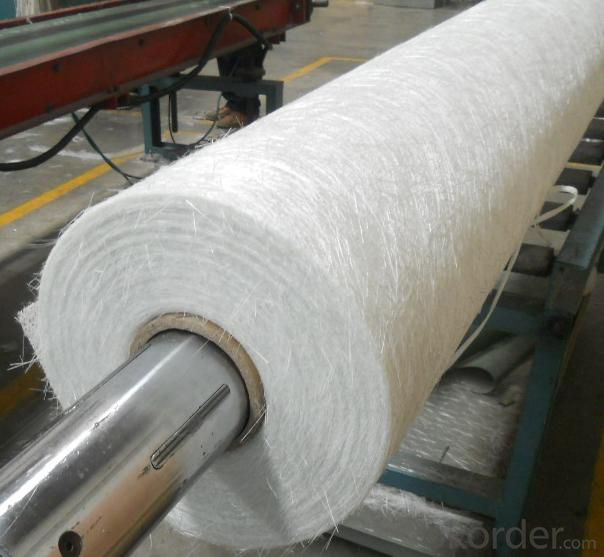
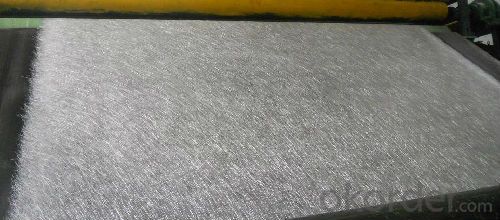
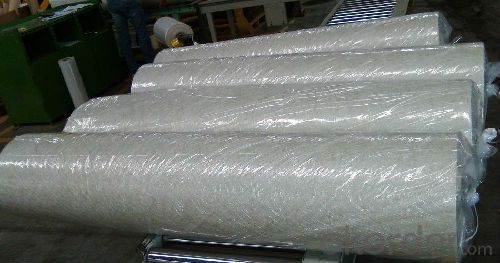
- Q: Can fiberglass mat tissue be used for architectural sculptures?
- Yes, fiberglass mat tissue can be used for architectural sculptures. It is a versatile material that can be shaped and molded to create intricate and detailed sculptures. It is also lightweight, durable, and resistant to weather and environmental conditions, making it suitable for outdoor installations. Additionally, fiberglass mat tissue can be easily painted or coated with various finishes to achieve the desired aesthetic.
- Q: Are there any environmental considerations when using fiberglass mat tissue?
- There are numerous factors to consider in terms of the environment when utilizing fiberglass mat tissue. First and foremost, the production process for fiberglass mat tissue necessitates the consumption of energy and resources. This involves extracting non-renewable raw materials like silica sand, limestone, and soda ash. Furthermore, the energy-intensive procedure of melting these materials at high temperatures contributes to greenhouse gas emissions. In addition, the manufacturing of fiberglass entails the utilization of chemicals such as resins and binders, which can be environmentally harmful if not properly managed. If these chemicals are not handled and disposed of correctly, there is a potential risk of them seeping into water bodies or soil. Moreover, fiberglass mat tissue is not capable of biodegradation. It can take hundreds of years for it to decompose in a landfill. Inadequate disposal of fiberglass mat tissue can lead to environmental pollution and contribute to the ongoing waste management issue. Lastly, the use of fiberglass mat tissue in certain applications, such as insulation or construction, can have implications on energy efficiency. While fiberglass is an effective insulator, its production and installation may require additional energy inputs, such as the use of fossil fuels for transportation or heating during installation. To address these environmental considerations, it is crucial to promote sustainable practices in the production and use of fiberglass mat tissue. This can involve implementing energy-efficient manufacturing processes, reducing the utilization of harmful chemicals, encouraging the recycling or reuse of fiberglass materials, and exploring alternative materials with lower environmental impacts.
- Q: What is the expected lifespan of fiberglass mat tissue?
- The lifespan of fiberglass mat tissue can differ based on several factors, including material quality, exposure conditions, and specific usage. Nonetheless, fiberglass mat tissue is renowned for its longevity and durability. When manufactured and installed correctly, fiberglass mat tissue has the potential to endure for many decades. It possesses resistance against decay, corrosion, and various chemicals, making it suitable for diverse industries and applications. Furthermore, fiberglass mat tissue is esteemed for its strength and capacity to withstand high temperatures. Nevertheless, it is crucial to acknowledge that prolonged exposure to harsh environmental elements, such as extreme temperatures, UV radiation, and moisture, may gradually degrade the material. Regular maintenance and appropriate care can aid in prolonging the lifespan of fiberglass mat tissue. In conclusion, while it remains challenging to determine an exact anticipated lifespan for fiberglass mat tissue, it is generally perceived as a long-lasting material when utilized and maintained properly.
- Q: What is the flexibility of fiberglass mat tissue at low temperatures?
- The flexibility of fiberglass mat tissue at low temperatures is generally maintained, as fiberglass has low thermal expansion and contraction properties, allowing it to retain its flexibility even in cold conditions.
- Q: Is fiberglass mat tissue suitable for insulation in educational facilities?
- Yes, fiberglass mat tissue is suitable for insulation in educational facilities. Fiberglass mat tissue is commonly used in insulation applications due to its excellent thermal insulation properties. It is a lightweight and cost-effective material that can effectively insulate buildings, including educational facilities, against heat loss or gain. Fiberglass mat tissue is also known for its fire-resistant properties, which is an important aspect to consider in any building, especially in educational facilities where the safety of students and staff is a top priority. Additionally, fiberglass mat tissue is easy to install and does not require extensive maintenance, making it a convenient choice for insulation in educational facilities.
- Q: What are the typical mechanical properties of fiberglass mat tissue?
- The typical mechanical properties of fiberglass mat tissue include high strength, excellent tensile and tear resistance, good dimensional stability, and low elongation. Additionally, it has a high modulus of elasticity and is resistant to corrosion, chemicals, and moisture.
- Q: How does fiberglass mat tissue perform in terms of thermal resistance?
- Fiberglass mat tissue performs exceptionally well in terms of thermal resistance. Due to the inherent properties of fiberglass, such as low thermal conductivity and high melting point, the mat tissue effectively acts as a barrier against heat transfer. It efficiently blocks the conduction of heat, limiting thermal energy from passing through the material. This makes fiberglass mat tissue an excellent choice for insulation applications where thermal resistance is crucial, such as in buildings, industrial equipment, and automotive components. Additionally, fiberglass mat tissue is known for its fire-resistant properties, further enhancing its ability to withstand high temperatures and provide excellent thermal insulation.
- Q: What are the different reinforcement patterns available for fiberglass mat tissue?
- Some different reinforcement patterns available for fiberglass mat tissue include random pattern, grid pattern, and diamond pattern. Each pattern offers different levels of strength and durability depending on the specific application and requirements.
- Q: How does fiberglass mat tissue compare to cellulose insulation?
- Fiberglass mat tissue and cellulose insulation differ in terms of material composition and insulation properties. Fiberglass mat tissue is made from fine glass fibers, while cellulose insulation is composed of recycled paper fibers treated with fire-retardant chemicals. Fiberglass mat tissue offers higher R-value, meaning it provides better thermal insulation and energy efficiency. Additionally, it is resistant to moisture and does not promote mold growth. On the other hand, cellulose insulation is more affordable, environmentally friendly, and provides better sound insulation. Ultimately, the choice between the two depends on specific insulation needs, budget, and environmental considerations.
- Q: Is fiberglass mat tissue suitable for aerospace repairs?
- Indeed, fiberglass mat tissue proves to be a fitting choice for aerospace repairs. This lightweight and pliable material can be effortlessly shaped and applied to various surfaces. Its exceptional strength-to-weight ratio makes it particularly suitable for circumstances where weight plays a crucial role, such as aerospace repairs. Aerospace repairs frequently employ fiberglass mat tissue to fortify areas of the aircraft structure that have been compromised or weakened. By doing so, it ensures outstanding structural integrity and longevity, enabling the repaired region to endure the demanding conditions and stresses encountered during flight. Moreover, fiberglass mat tissue demonstrates compatibility with various resin systems, including epoxy and polyester. This allows for efficient bonding, guaranteeing a dependable repair. Its versatility permits it to be utilized in both interior and exterior repairs, such as patching up composite panels, reinforcing wing sections, or rectifying damaged fuselage areas. Beyond its mechanical attributes, fiberglass mat tissue also exhibits exceptional resistance to corrosion, moisture, and chemicals. This enhances the durability of the repaired components, a particularly important feature in aerospace applications where the aircraft is frequently exposed to harsh environmental conditions. All in all, fiberglass mat tissue emerges as a suitable material for aerospace repairs due to its lightweight nature, impressive strength, versatility, and resistance to environmental factors. Its use in the aerospace industry has been firmly established, and it remains a dependable choice for repairing and reinforcing critical aircraft components.
Send your message to us
Fiberglass Mat Tissue - Powder Binder E Glass Chopped Strand Mat for Fixed Table Lamination
- Loading Port:
- China Main Port
- Payment Terms:
- TT or LC
- Min Order Qty:
- 1000 kg
- Supply Capability:
- 500000 kg/month
OKorder Service Pledge
OKorder Financial Service
Similar products
Hot products
Hot Searches
Related keywords
